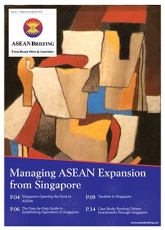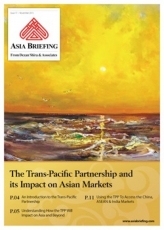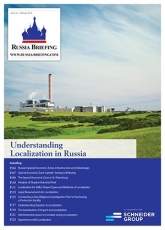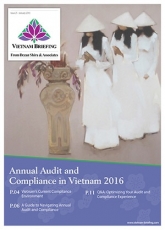China Based Foreign Manufacturers – Finding “Beyond China” Investment Intelligence
As China’s economy continues its path towards reform, the make up of its still-growing receipts of foreign investment dollars continue apace. China’s FDI increased by 4.7 percent in 2015, yet the form of investment is changing. A whopping 72 percent of the US$126.3 billion invested last year was in the services sector, as global businesses continue to invest to support the selling of goods and services to Chinese consumers.
This fits right in line with Chinese government policy – China wants and needs to attract dollars into services, and has said as much. According to President Xi, “The economy has entered a new stage of slower but more resilient growth.” which Xi calls the new normal. “The essence of which is an improved economic structure that relies more on domestic consumption, the service sector and innovation.”
It’s important to reiterate that President Xi himself refers to the development of China’s services sector, and foreign direct investment within that, as ‘the new normal’. But there is a caveat. What is to become of the foreign invested manufacturing entities in China?
Once feted and attracted to invest their dollars in China by means of low (15 percent) income tax rates, five year tax holidays and low China wages, these investors are now increasingly at odds with China’s own plans for development. China’s wages are now higher than much of the rest of Asia, and at a senior level are outstripping salaries in Japan, the EU and the United States. Manufacturing in China, once the darling of sharp penciled in-house accountants, is now becoming a headache for many. But where to turn to for considered market intelligence and financial comparisons?
Happily, our own China Briefing facility has over the years been quietly adding additional strings to its bow, as has Dezan Shira & Associates, the consulting practice behind it. If you’re not already familiar with these titles, check out our additional, well established portals and magazines below:
![]()
Regular updates on all matters relating to foreign investment trends, laws, taxes and costs throughout ASEAN. Includes updates investing in Singapore, Indonesia, Malaysia, Philippines, Thailand and Vietnam as well as Cambodia, Laos & Myanmar.
Most recent online articles:
Understanding Financial Integration in ASEAN
Singapore Overtakes Hong Kong As Asia’s Top Financial Hub
Our catch all portal containing updates on all Asian countries and comparisons between them.
Most recent online articles:
Cambodia, Laos & Myanmar – 2016 Foreign Investment Outlook
Thailand 2016 – Foreign Investment Trends & Opportunities
Philippines 2016 – Opportunities & Roadblocks for the Foreign Investor
Established way back in 2005, and now one of the leading business sites for foreign investors looking at India. All news and regulatory updates for the foreign investor in India.
Most recent online articles:
Despite its problems, top economists feel Russia is weathering its economic storms and is expected to emerge from them stronger than before. Meanwhile, many EU governments are becoming increasingly unhappy with the sanctions. What can Russia and the CIS promise for the savvy investor?
Most recent online articles:
Russia To Tag Fur Imports To Prevent Customs Fraud
Fitch Affirms Russia as ‘BBB’ While Some Are ‘BB’ Stable
Moscow To Arrange Shopping Tours for Wealthy Chinese Clientele
With U.S. President Barack Obama about to visit Vietnam, and the TPP agreement signed, Vietnam is poised to attract a lot of investment previously destined for China. Read all about Vietnam’s regulatory, investment law and tax updates on this popular portal.
Most recent online articles:
The Guide to Drafting PPP Proposals and Feasibility Studies in Vietnam
Industry Spotlight – Vietnam’s Growing Appetite for Education
Complimentary Subscriptions, inclusive of updates containing the best of each of these websites, together with the most important news from China Briefing, can be obtained by clicking here.
|
Chris can be followed on Twitter at @CDE_Asia. Stay up to date with the latest business and investment trends in Asia by subscribing to our complimentary update service featuring news, commentary and regulatory insight.
|
![]()
 Managing ASEAN Expansion From Singapore
Managing ASEAN Expansion From Singapore
For the second issue of our ASEAN Briefing Magazine, we look at the benefits of using Singapore a hub for the management of regional operations throughout ASEAN. We firstly focus on the position of Singapore relative to its competitors, such as the Netherlands and Hong Kong. We then provide step-by-step instructions on corporate establishment, and provide expert insight on maximizing returns through the reduction respective tax burdens.
 Understanding the Trans-Pacific Partnership & Its Impact on Asian Markets
Understanding the Trans-Pacific Partnership & Its Impact on Asian Markets
In this issue of Asia Briefing magazine, we examine where the TPP agreement stands right now, look at the potential impact of the participating nations, as well as examine how it will affect Asian economies that have not been included.
 Hiring, Terminating and Retaining Employees in India
Hiring, Terminating and Retaining Employees in India
In this issue of India Briefing Magazine, we examine issues related to hiring, firing and retaining employees in India. We highlight the most common legal issues that arise from India’s employment process, summarize the procedures for terminating an employee, and detail some of the most important factors for attracting talent. In addition, we outline some cultural considerations for foreign personnel working with Indian employees.
 Understanding Localization in Russia
Understanding Localization in Russia
In this issue of Russia Briefing we discuss the advantages of localization in Russia for foreign companies, and provide an analysis of Russia’s industrial parks and Special Economic Zones (SEZs). We also feature an article from the General Director of ZENTIS Russia on their experience of producing jam, marmalade and other sweets in the country.
 Understanding Annual Audit & Compliance in Vietnam
Understanding Annual Audit & Compliance in Vietnam
In this issue of Vietnam Briefing, we address pressing changes to audit procedures in 2015, and provide guidance on how to ensure that compliance tasks are completed in an efficient and effective manner. We highlight the continued convergence of VAS with IFRS, discuss the emergence of e-filing, and provide step-by-step instructions on audit and compliance procedures for Foreign Owned Enterprises (FOEs) as well as Representative Offices (ROs).
- Previous Article How to Choose a Third-Party When Entering China’s e-Commerce Market
- Next Article Case Study: Labor Contract Compliance in China












